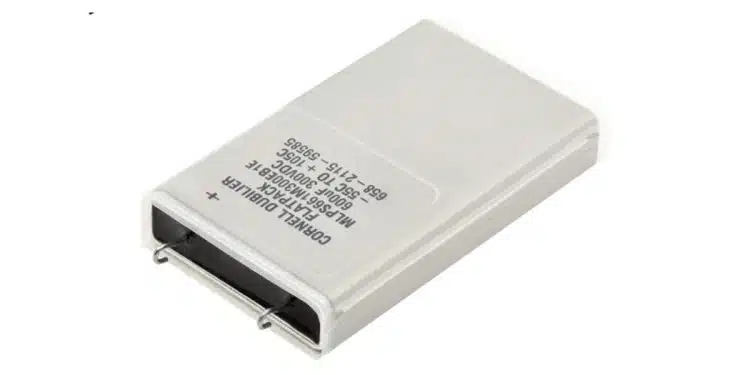Cornell Dubilier’s MLPS aluminum flatpack capacitors allow designers to create higher-performance end products optimized for 105°C with voltage ratings up to 450V.
Type MLPS Flatpack, is a low-profile aluminum electrolytic capacitor, tested and rated for 10,000 hours at 105 °C.
Type MLPS offers high capacitance density in a flat configuration, with voltage ratings up to 450 Vdc and a temperature range from -55 °C to 105 °C. Their rugged construction provides extraordinary life and reliability for the most robust, commercial, and military-grade power supplies.
MLPS capacitors are available in 4 sizes. All cases have a thickness (height profile above the board) of 0.6 inches and a width of 1.8 inches. Case lengths are available from 1.5 to 3.0 inches, with capacitance values ranging from 120 to 51,000 µF and voltage ratings spanning 7.5 Vdc to 450 Vdc. The larger case sizes are typically rated for several amps (RMS). Ripple current ratings can be significantly enhanced by adding one or more heat sinks to their flat sides.
Unlike conventional electrolytics that have a rolled cover, MLPS covers are laser-welded, providing near-hermetic seals that resist electrolyte dry-out. They can be put into service at high altitudes of up to 80,000 feet and have excellent capacitance retention at low temperatures. Various lead types and mounting options are available.
Features
• Military-grade flat electrolytics, now optimized for 105 °C applications
• Life tested to 10,000 hours @ 105 °C, Rated Vdc
• High Vibration resistance up to 20g (HV Option)
• High Reliability burn-in available (48 hrs @ Vr, 105 °C)
• Welded seal resists “dry-out,” typical of conventional electrolytics
• Excellent capacitance retention at -55 °C
































